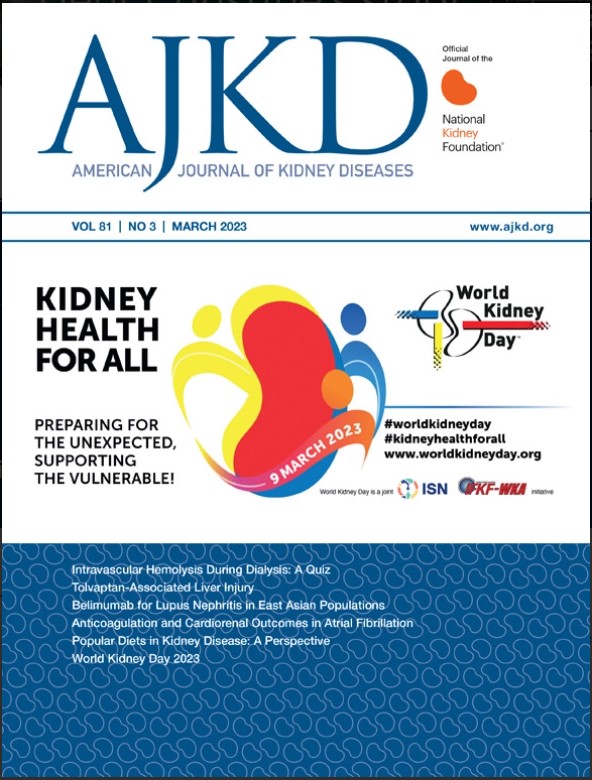重新审视快速纠正低钠血症的死亡率益处的新数据:重新开始。
IF 8.2
1区 医学
Q1 UROLOGY & NEPHROLOGY
引用次数: 0
摘要
20世纪80年代的研究将严重慢性低钠血症与渗透性脱髓鞘综合征(ODS)的快速纠正联系起来,导致了一场重大的争议,最终让位于共识指南。在发生ODS的高危患者中,将纠正量限制在每天≤8mmol /L已成为普遍做法。最近的研究对这些指南提出了质疑,认为消耗臭氧层物质是罕见的,缓慢的纠正可能会增加死亡率。在这篇综述中,我们重新审视了争议的历史,并发现这些说法已经持续了四十年。支持更快矫正的较早研究因转诊偏倚而存在缺陷,而较新的研究因混淆而受到限制,因为合并症影响死亡率和低钠血症矫正率。虽然旧的和新的研究都强调快速纠正后mri记录的ODS的罕见性,但它们并没有在有ODS风险的低钠血症患者中进行。报道脑水肿导致低钠血症死亡的旧研究高估了其真实发生率,而报道死亡率与钠校正速度缓慢相关的新研究并未将脑水肿作为导致死亡的常见因素。需要进一步的研究来更好地确定有这些并发症风险的患者中ODS和脑水肿的发生率。在此之前,我们得出结论,快速矫正的风险——包括不可逆转的神经损伤——需要谨慎。临床医生应继续优先考虑缓慢、有控制的钠纠正,以保护高危患者免受伤害。本文章由计算机程序翻译,如有差异,请以英文原文为准。
Revisiting New Data on the Mortality Benefit of Rapid Correction of Hyponatremia: Déjà vu All Over Again.
Studies in the 1980s linking rapid correction of severe, chronic hyponatremia to the osmotic demyelination syndrome (ODS) led to a major controversy that eventually gave way to consensus guidelines. Efforts to limit correction to ≤8 mmol/L per day in patients at high risk of developing ODS became common practice. Recent studies have questioned these guidelines, suggesting that ODS is rare and that slow correction may increase mortality. In this review, we revisit the history of the controversy and find that these claims have persisted for four decades. Older studies supporting faster correction are flawed by referral bias while newer studies are limited by confounding as comorbidities influence rates of both mortality and hyponatremia correction. While both old and new studies emphasize the rarity of MRI-documented ODS after rapid correction, they were not conducted in hyponatremic patients who were at risk for ODS. Old studies reporting hyponatremic deaths due to cerebral edema overestimate its true incidence and new studies reporting an association of mortality and slow rates of sodium correction do not document cerebral edema as a common contributor to death. Further research is required to better define the incidence of both ODS and cerebral edema in patients at risk for these complications. Until then, we conclude that the risks of rapid correction-including irreversible neurological damage-necessitate caution. Clinicians should continue to prioritize slow, controlled sodium correction to protect high-risk patients from harm.
求助全文
通过发布文献求助,成功后即可免费获取论文全文。
去求助
来源期刊

American Journal of Kidney Diseases
医学-泌尿学与肾脏学
CiteScore
20.40
自引率
2.30%
发文量
732
审稿时长
3-8 weeks
期刊介绍:
The American Journal of Kidney Diseases (AJKD), the National Kidney Foundation's official journal, is globally recognized for its leadership in clinical nephrology content. Monthly, AJKD publishes original investigations on kidney diseases, hypertension, dialysis therapies, and kidney transplantation. Rigorous peer-review, statistical scrutiny, and a structured format characterize the publication process. Each issue includes case reports unveiling new diseases and potential therapeutic strategies.
 求助内容:
求助内容: 应助结果提醒方式:
应助结果提醒方式:


